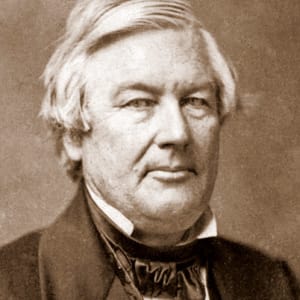By Kaleena Fraga
Thanks to Twitter and the Internet, conspiracy theories abound in today’s politics. But conspiracy theories have always had a place in American political history. On this day in 1850 Millard Fillmore was inaugurated as president, stepping into the role from the vice presidency after Zachary Taylor died in office. Taylor’s death was seen as suspicious by some, to the point that his body was exhumed 141 years after his death.

Taylor, after partaking in 4th of July activities on a hot summer day in Washington D.C. is reported to have downed large quantities of iced milk and cherries, which gave him a terrible stomach ache. The doctors who tried to cure him made things worse, and Taylor, a Whig, died a few days later. His vice president Fillmore was also a Whig, but had dabbled in perhaps the first (but not the last) political party born of a conspiracy theory, the Anti-Masons, who believed that Freemasons were murdering whistleblowers. They counted John Quincy Adams as one of their members. Fillmore would also later join the anti-immigrant Know-Nothing party.
Taylor’s illness at the time was attributed to “cholera morbus” caused by what he ate, but suspicions abounded. Although Taylor had no known enemies–Professor Elbert B. Smith, of the University of Maryland called him the “Eisenhower of his time”–he did live in an era ripe with political tension. In the build-up to the Civil War, which would start ten years later, states continued to argue about rules pertaining to slavery, leading one Senator to draw a pistol on another on the Senate floor in the months before Taylor’s death.
Taylor was from the South and had even owned slaves, but his actions as president made many Southerners nervous. He had climbed the political rungs through his career as a soldier, and sought to damper any talks of secession among the states. Fillmore was from the North, but sympathetic to Southern interests. Once president, he helped to arrange the Compromise of 1850 which Taylor had opposed. Although the Compromise allowed California into the Union as a free state, it also hardened the Fugitive Slave Act, requiring citizens to help recover slaves who had fled their owners, and denying slaves who fled their right to a trial by jury.
Taylor’s body was exhumed in 1991, after lobbying by author Clara Rising, who claimed that Taylor, not Lincoln, could be the first American president to be assassinated. She theorized that Taylor’s death could have come from arsenic poisoning, and that he had died suddenly and strangely for someone so healthy. “Right after his death, everything [Taylor] had worked against came forward and was passed by both houses of Congress,” said Rising.
The results of the tests done on Taylor’s exhumed body put the conspiracy theory to rest: although his corpse contained trace amounts of arsenic, it would not have been enough to kill him. It’s likely that the milk and cherries that Taylor ate did not kill the president, but perhaps exacerbated another condition–and the doctors’ attempts to save him likely made things worse.
Although Taylor didn’t live long enough to leave much of a mark on the presidency or the nation, his untimely death easily leads to speculation of what could have happened if he lived. If Taylor had served out his full term, instead of Fillmore, would it have been possible to avoid the Civil War? We’ll never know.

Fascinating! Puts our Trumpian World into historical context. Our Republic has weathered many storms.
LikeLike